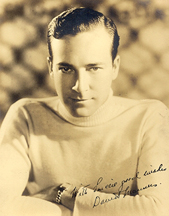April 30, 2014
Luigi Russolo’s “art of noise” is probably the most profound pieces of music I have ever heard. To me, it is the genuine soundtrack to a horrible century. The beauty that is destructive, yet all of us are attracted to the disaster as a moth is drawn to a flame. Become too close to the heat and the wings will burn off. I often felt that love for the great 20th century art, cinema, can lead one to leap into the void. It is not a question of cinema itself, but also all the by-products that goes with it.
It has been pointed out that Adolf Hitler and Eva Braun were devoted to the cinema, and especially to its actress Marika Rokk. Hitler was at the same time a fan of Mickey Mouse. What he saw in the mouse is something that I am not clear about. Nevertheless, Goebbels gave Hitler 12 Mickey Mouse cartoons as a Christmas present in 1935. Eva and Hitler had their own private screening room, but to me that becomes part of the problem. Going to a movie theater is fantastic on many levels, one, being that you’re in an audience. Being with an audience is so different from watching a film by yourself or with another person.
The first time I went to a movie theater was to see a Brigitte Bardot film in Larkspur, but the one screening I remember the most is when my dad took me to see a James Bond film called “Goldfinger.” The most exciting part of the movie was being at the Grauman’s Chinese Theater on Hollywood Bouvelard. Oddly enough, I have seen all the Bond films at least twice, except for “Goldfinger.” I can’t imagine watching that film in any other location except for the Chinese theater. To see that film now, at another location, would be like removing one of my arms - “Goldfinger” will be always attached to the feelings and sensations of going to the Chinese theater.
I have a faint memory of seeing Tod Browning’s “Dracula, starring Bela Lugosi and David Manners, at the Chinese Theater and hearing that there were actual bats inside the theater. I was led to believing that bats often fly across the projected screen, but I have never seen it happen. However, to this day, it is one of the first things I think about, while in the theater, and waiting for the film to start.
I am also touched to know and have seen the hand and foot prints of Mary Pickford and Douglas Fairbanks, outside the theater. One can imagine the angels that pranced around the property, where in Hitler and Eva’s theater, with the lights out, demons feeding off on the darkness.





















_01.jpg)























.jpg)






























